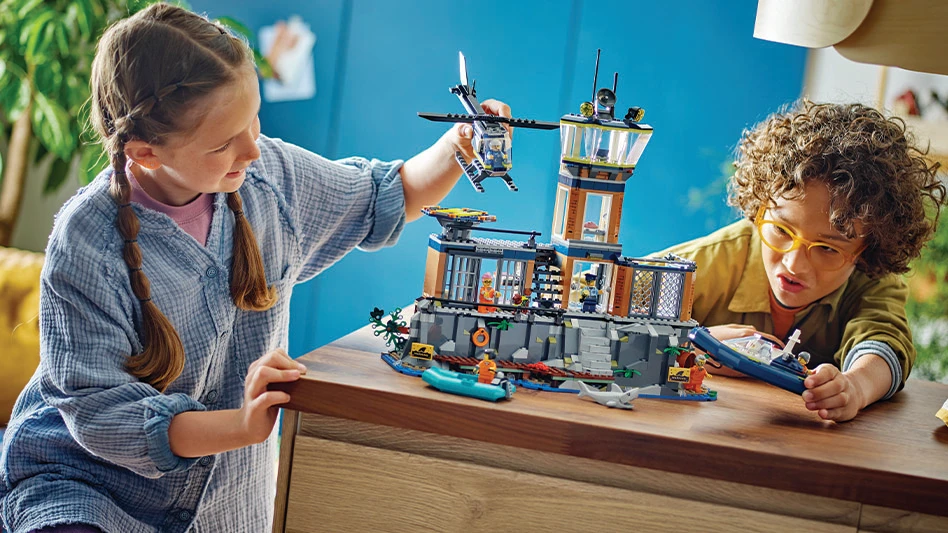
Image courtesy of the Lego Group
In its earnings report for the first half of 2024, the Lego Group notes continued increases in the amount of plastic resin purchased from sustainable sources certified under the mass balance principle and intends to maintain that trend.
“By doing this, the company aims to help accelerate the industry’s transition to more sustainable, high-quality materials,” the Denmark-based toymaker says in its report. In the first half of 2024, 30 percent of all resin purchased was certified mass balance, which translates to an estimated average of 22 percent material from renewable and recycled sources.
By comparison, Lego reported in 2023 that 18 percent of its material was certified mass balance, which equated to 12 percent sustainable sources.
“Over the coming years, the company aims to purchase more than half of its raw materials from sustainable sources via the mass balance principle and, by doing so, reducing its use of virgin fossil materials,” the company says.
In a Reuters report, Lego says it is on track to replace the fossil fuels used in making its bricks with more expensive renewable and recycled plastic by 2032 after working with producers to secure long-term supply.
Reuters also reports the company is willing to pay up to 70 percent more for certified renewable resin to utilize in its bricks in an attempt to encourage manufacturers to boost their production. Lego Group CEO Niels Christiansen tells Reuters the company is on track to ensure that more than half of the resin it needs in 2026 is certified according to mass balance.
“With a family-owner committed to sustainability, it’s a privilege that we can pay extra for the raw materials without having to charge customers extra,” Christiansen says.
The pledge to increase recycled resin usage comes almost one year after Lego scrapped an initiative to manufacture bricks using recycled polyethylene terephthalate (rPET) bottles. At the time, the company told the Financial Times its use of rPET would result in higher CO2 emissions than the system it typically uses, though it still planned to make its products sustainable by 2032.
“We tested hundreds and hundreds of materials,” Christiansen told the Financial Times in September of last year. “It’s just not been possible to find a material like that.”
Most Lego pieces have been made from acrylonitrile butadiene styrene since 1963, though it also has manufactured pieces using a variety of plastics including bio-based polyethylene, polypropylene, polycarbonate, high-impact polystyrene, thermoplastic polyurethane and more.
Latest from Recycling Today
- Orion ramping up Rocky Mountain Steel rail line
- Proposed bill would provide ‘regulatory clarity’ for chemical recycling
- Alberta Ag-Plastic pilot program continues, expands with renewed funding
- ReMA urges open intra-North American scrap trade
- Axium awarded by regional organization
- Update: China to introduce steel export quotas
- Thyssenkrupp idles capacity in Europe
- Phoenix Technologies closes Ohio rPET facility





